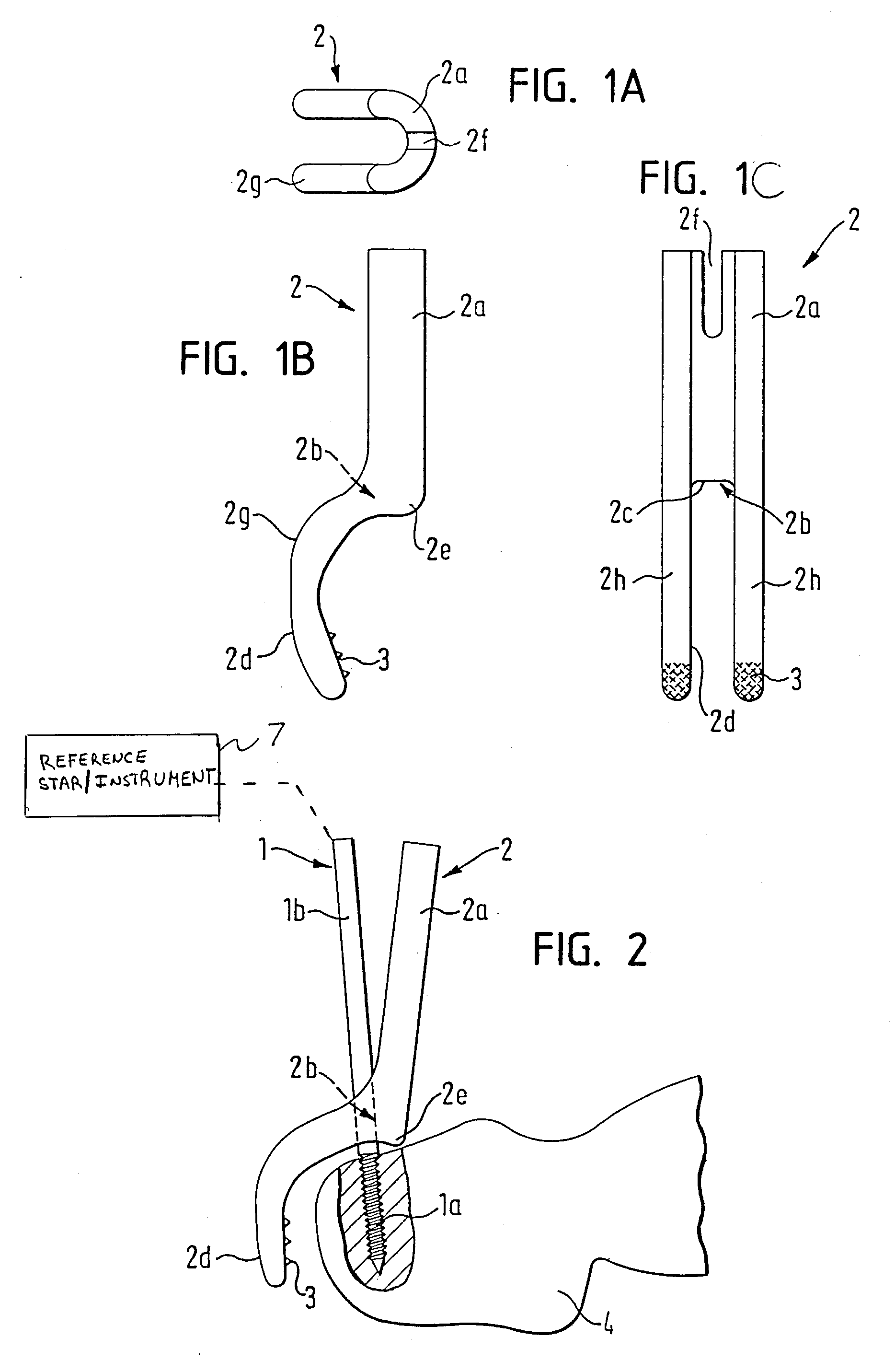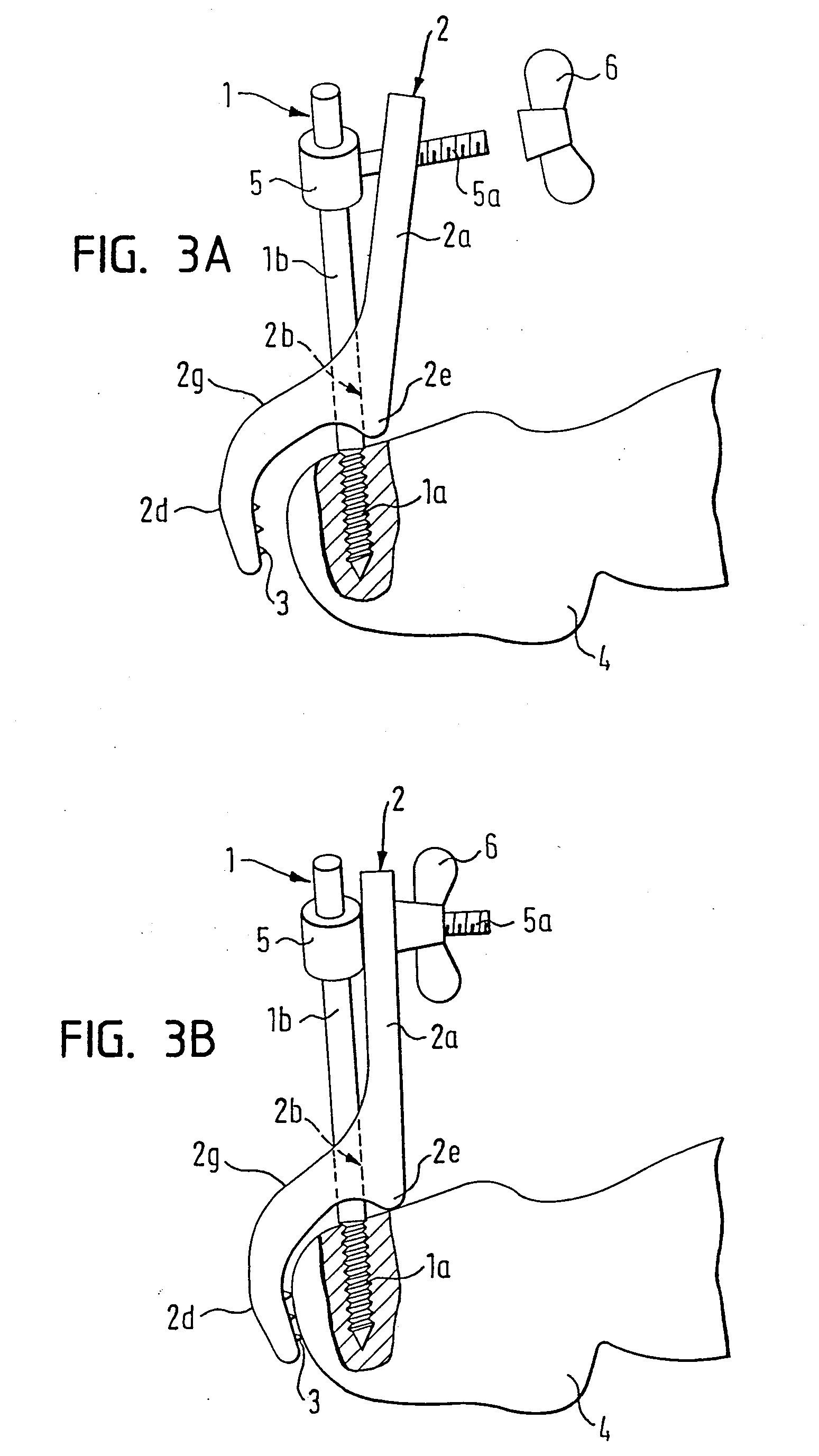Device for fixing a reference element
a reference element and device technology, applied in the field of devices and methods for fixing reference elements, can solve problems such as inability to move, and achieve the effect of sufficient stability in attaching devices
- Summary
- Abstract
- Description
- Claims
- Application Information
AI Technical Summary
Benefits of technology
Problems solved by technology
Method used
Image
Examples
Embodiment Construction
[0025] In the detailed description that follows, corresponding components have been given the same reference numerals, regardless of whether they are shown in different embodiments of the present invention.
[0026]FIGS. 1A-1C illustrate a second fixing portion 2 of an exemplary fixing device in accordance with the present invention. The second fixing portion 2 has a fork shape, and includes a shaft 2a having a U-shaped cross section. The fork-shaped portion is provided with two prong extensions 2h which comprise the second lever segment 2d of the second fixing portion 2. An upper part of the portion 2 includes the first lever segment 2a. The second lever segment 2d and the first lever segment 2a are connected to each other by an offset segment 2g. On the lower part of the first lever segment 2a, a shoulder segment 2e is provided which, for example, can be shaped like a mandrel or a bolt. A surface structure 3 can be provided at the end of the second lever segment 2d, e.g., at the end...
PUM
 Login to View More
Login to View More Abstract
Description
Claims
Application Information
 Login to View More
Login to View More - R&D
- Intellectual Property
- Life Sciences
- Materials
- Tech Scout
- Unparalleled Data Quality
- Higher Quality Content
- 60% Fewer Hallucinations
Browse by: Latest US Patents, China's latest patents, Technical Efficacy Thesaurus, Application Domain, Technology Topic, Popular Technical Reports.
© 2025 PatSnap. All rights reserved.Legal|Privacy policy|Modern Slavery Act Transparency Statement|Sitemap|About US| Contact US: help@patsnap.com



